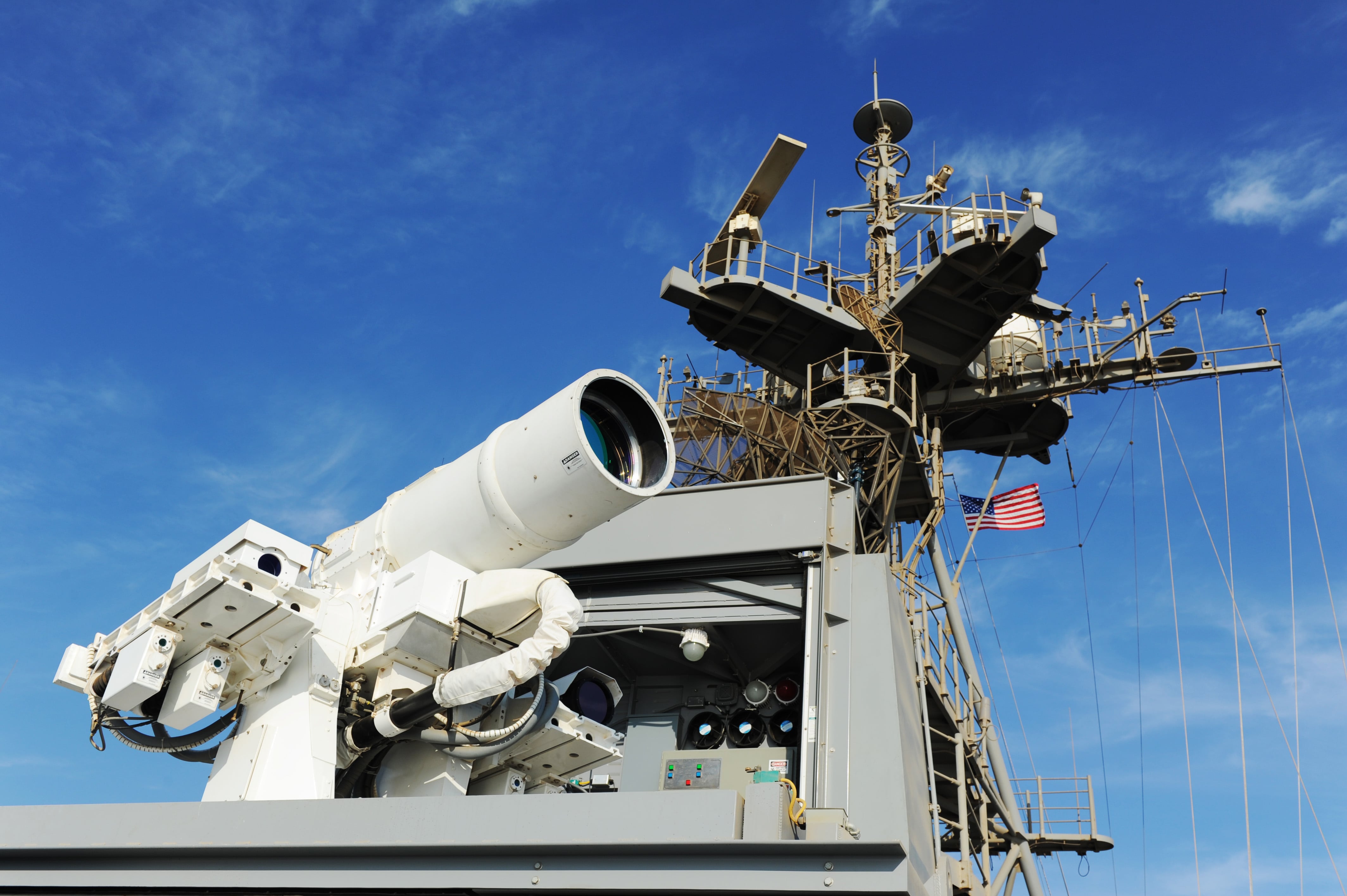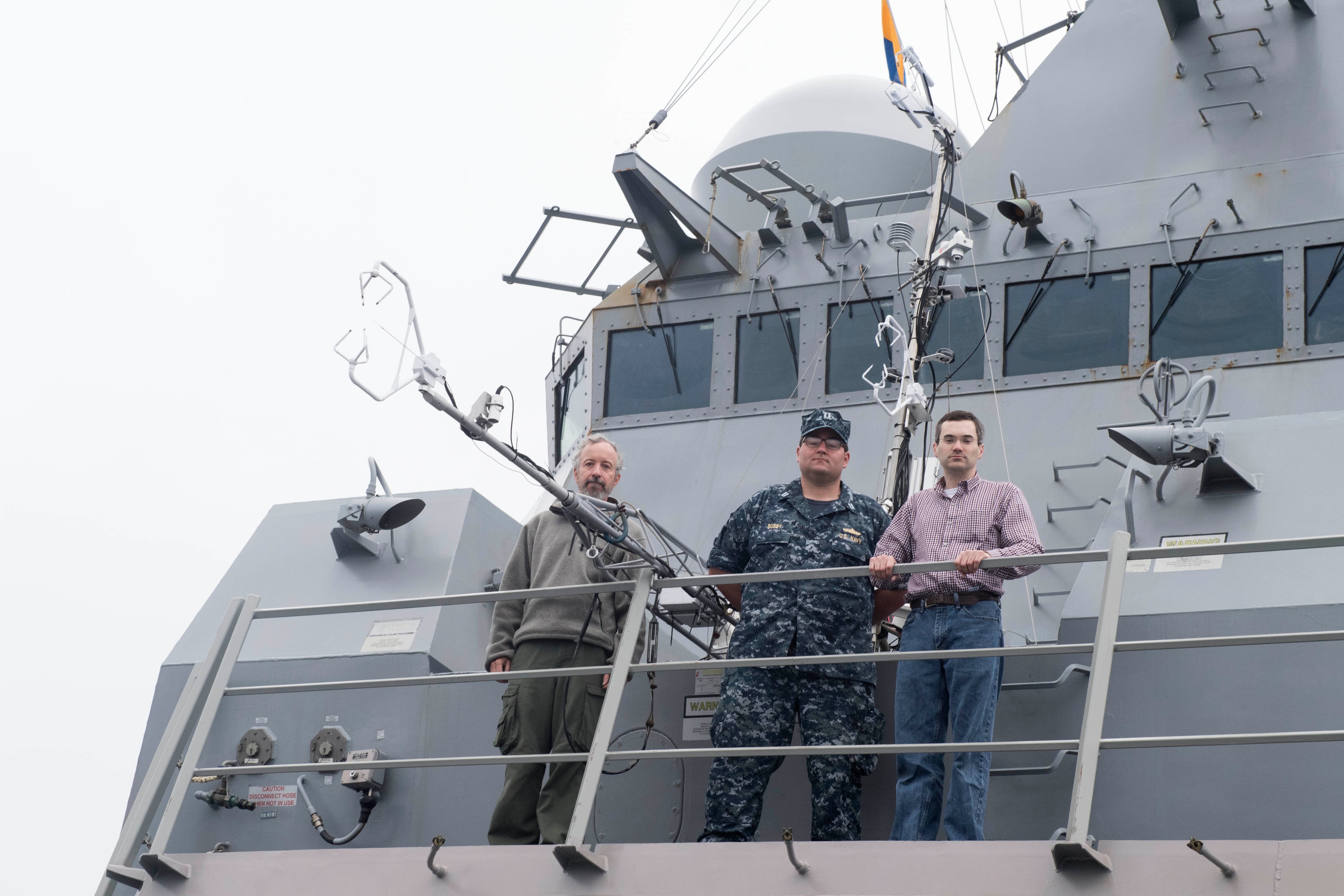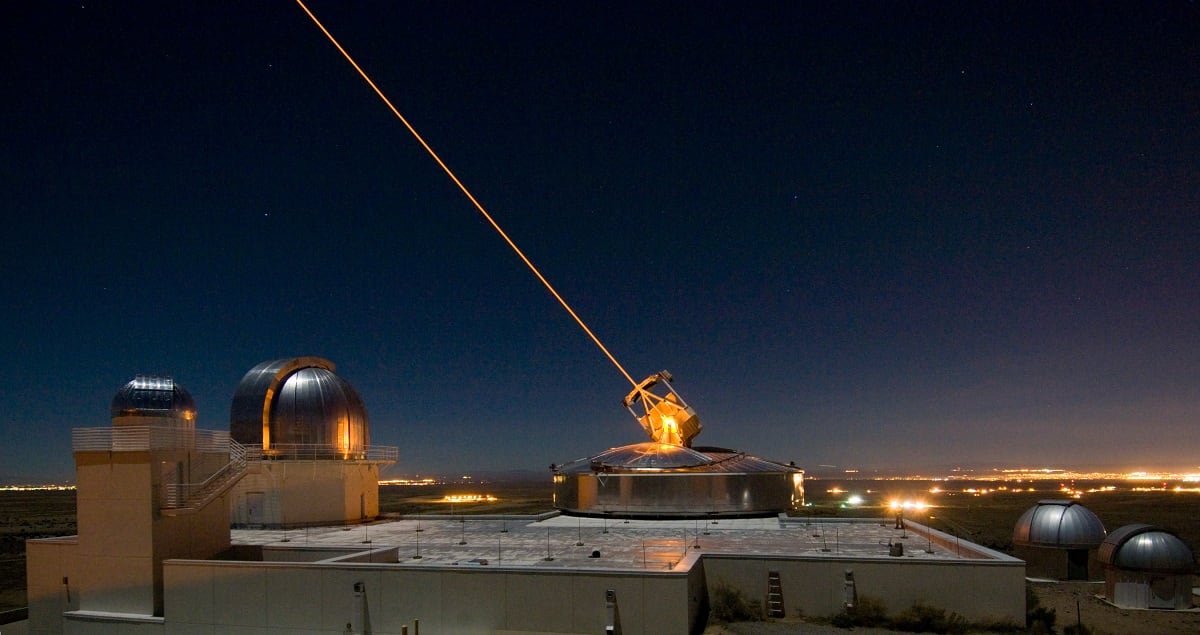SEATTLE — The Navy has never been closer to fielding lasers and other directed-energy weapons.
Technological challenges remain, but the sea service is slated to test a 150-kilowatt spectrally beam-combined fiber laser on the amphibious platform dock ship Portland this year.
And by 2021, the Navy’s director of surface warfare, Rear Adm. Ron Boxall, intends to mount a nastier warship killer on a guided-missile destroyer.
“This is something we have to have on our ships,” he told the audience at the 2019 Directed Energy Summit in Washington, D.C., on March 20.
A product of the Office of Naval Research’s Solid-State Laser Technology Maturation System program, it builds on lessons learned in 2014 when the Afloat Forward Staging Base - Interim Ponce tested a 30-kilowatt SEQ-3 system.
The Navy’s also moving to install ODIN — Optical Dazzling Interdictor, Navy — on two Arleigh Burke-class destroyers this year, with up to six more units on the way, according to unclassified budget documents.
Low-energy laser ODIN is designed to dazzle drones, not set enemy fleets on fire.
What Boxall wants for other DDGs is a combination of the Portland’s high-energy beam with an ODIN-like dazzler.
Call it the Surface Navy Laser Weapon System or HELIOS — High-Energy Laser Integrated Optical-Dazzler with Surveillance — it’s being wired to work within the Aegis Combat System.
Navy leaders hope that it succeeds as both a target tracker for missiles and a directed-energy weapon that can fry an enemy frigate.
That sort of system would be a “game changer” if it’s developed and deployed, according to an October Congressional Research Service report.
“Rarely has the Navy had so many potential new types of surface-ship air-defense weapons simultaneously available for development and potential deployment,” the report states.

But don’t count on futuristic “pew-pew” lasers roasting incoming swarms of Chinese missiles as a given, CRS warned.
“Although the Navy in recent years has made considerable progress in developing technologies for these new weapons, a number of significant development challenges remain,” the report stated.
“Overcoming these challenges will require development work, and ultimate success in overcoming them is not guaranteed.”
To Eric Wertheim, a defense consultant and author of “Combat Fleets of the World,” the challenges are worth overcoming because the promise of these new capabilities mitigate threats that threaten America’s fleet.
Like the CRS report and Navy leaders, Wertheim remains bullish about how revolutionary such systems could become, likening lasers to “the advent of the missile age, moving from guns to missiles” in the 1950s and 1960s.
It could even be “at least as big as nuclear submarines,” he added.
“Directed energy has the ability to completely alter the way that navies fight,” Wertheim said.
The main benefit of using laser systems to defend U.S. warships would come in the Western Pacific, where an increasingly assertive and capable China can churn out large quantities of cheap missiles designed to overwhelm America’s pinpoint defenses.
The fear is that an American destroyer risks emptying a magazine of anti-ballistic missiles to counter incoming waves of Chinese weapons. That will leave the warship to rely on its gun or remove itself from the fight to reload its vertical launching system.
Lasers promise a far less expensive way to combat those incoming missiles, reserving the missiles for other targets, Wertheim said.
“You can save your missiles for longer-range issues, where you have to have the (defensive) missile or an offensive capability,” he said.

Theoretically, lasers could engage multiple targets at once, limited only by the number of beams on board a warship, the amount of electricity needed to power them, inclement weather and their range, which remains below that of an SM-6 missile.
But they’re important defensive weapons because “you can save your missile tubes for the things you really need to use them for,” said Wertheim.
The problem of generating enough juice for laser systems might be solved by the stealthy Zumwalt-class destroyers, which can produce 58 megawatts of power, enough to light a city.
But only three destroyers in the class will be built.
Wertheim said that other vessels could tow laser-armed barges that also contain independent energy sources.
“If you put these assets at land bases, you free up the ballistic missile requirements that are needed for ships, and allow the ships to be mobile again,” he said.

Wertheim estimates it’ll be at least a decade before these types of systems come into widespread use, which is why the Navy needs to keep pursuing several technologies at once.
If one road is a dead end, another might lead to the future.
“You’re going to have to deal with the fact that … much like the Manhattan Project, we’re talking about real revolutions in technology,” he said. “You’re going to have false paths you hope for that might not pan out, while others that don’t seem to be bearing fruit might be a better path to go.”
In a way, the Navy has no choice but to develop and field this technology as fast as possible because potential enemies overseas will do the same thing, he said.
“This is not a problem that’s going away,” Wertheim said. “The expense of developing our naval assets is not a challenge that will be going away.”
Geoff is the managing editor of Military Times, but he still loves writing stories. He covered Iraq and Afghanistan extensively and was a reporter at the Chicago Tribune. He welcomes any and all kinds of tips at geoffz@militarytimes.com.




